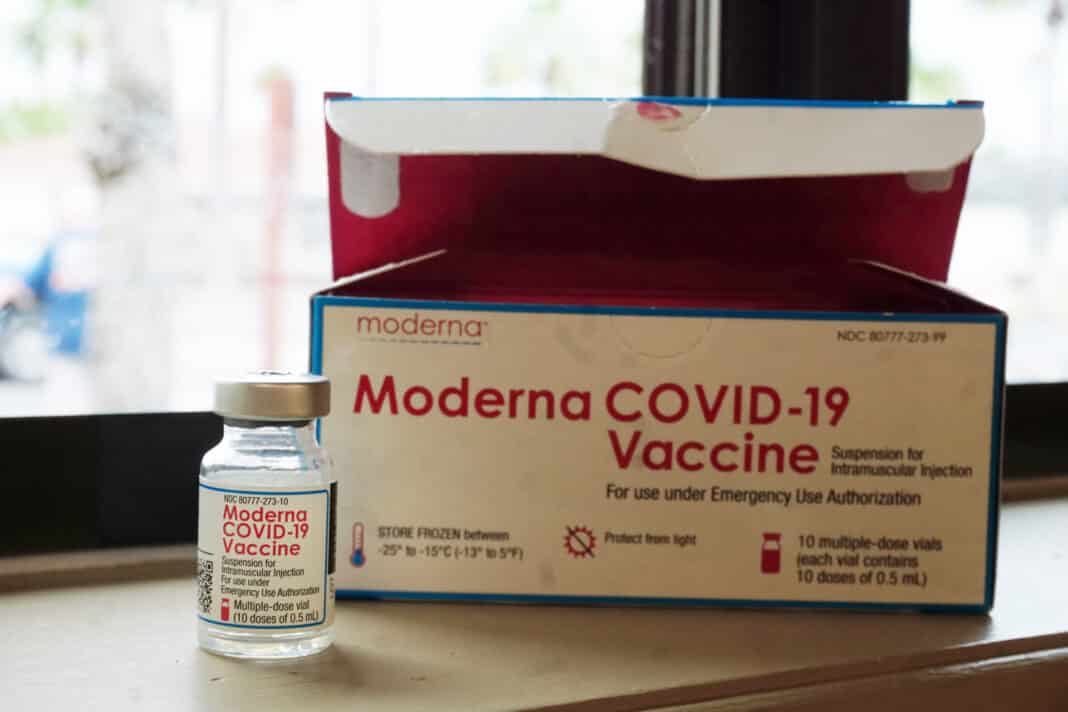While some states have struggled to fairly allocate vaccine doses to their more rural communities, the concerted teamwork of local officials meant efforts to vaccinate vulnerable populations in rural portions of the Rio Grande Valley have seen more successes.
It’s taken the cooperation and participation of multiple agencies, Hidalgo County Precinct 1 Commissioner David Fuentes said Thursday, just as hundreds of Delta area residents were getting their first dose of the Moderna COVID-19 vaccination.
From city governments, to police and fire departments, to school district nurses and healthcare students, it’s taken a gargantuan group effort to get vaccines in the arms of rural residents, Fuentes said.
“None of our communities can really do it by themselves, so, in this location, we are using Valley Grande Institute, which is a nursing program here in Weslaco,” Fuentes said of a mass vaccination drive that took place in Elsa.
“We also have the school district nurses of Edcouch-Elsa ISD, La Villa ISD, Monte Alto ISD. So, it truly is a collaborative effort,” Fuentes said.
Some 750 Delta residents got their first vaccine dose during Thursday’s event, Fuentes said. An additional 500 received vaccines the day before. The vaccine drive targeted the elderly population specifically.
The commissioner said officials know the elderly — who are among the most at risk of severe illness or death from COVID-19 — often have difficulty trying to secure a vaccination appointment.
Those difficulties range from lack of access to the technology needed to register online, to transportation issues, to mobility issues which make it harder for the elderly to stand or stay in one place for hours on end as they wait their turn.
“There’s an obstacle there for people that want to get vaccinated and just don’t have the means,” Fuentes said.
Robert McGinnis, the police chief and emergency management coordinator for the city of Elsa, agreed.
“A lot of our population are older. They maybe don’t have reliable transportation to get to the Bert Ogden Arenas and other places like that,” McGinnis said, referring to far away mass vaccination clinics that have been able to inoculate up to 6,000 people at a time.
As such, officials like Fuentes have made it a point to bring the vaccine to them — or at least as close to them as he can get it.
Of the 750 doses administered in the parking lot of Benny Layton Memorial Stadium on Thursday, Fuentes said 100 registration spots were given to officials in La Villa, another 100 to Monte Alto, and 50 to Hargill.
The commissioner tasked leaders of those communities to distribute the registrations to their over-65 residents.
“These smaller communities, people know people. So, they know who the over 65 people are” in their towns, Fuentes said.
“We really wanted to target those areas,” he said.
Things were moving smoothly as lunchtime approached Thursday. Cars were directed to approach the football stadium from the east, then filed into the parking lot in neat rows. At the end of each row stood tables shaded by canopies where vaccine technicians stood ready to administer the shots.
Afterward, residents were directed to drive to the parking lot on the opposite side of the stadium, where they waited the requisite 15 minutes before being cleared to leave.
The vaccine distribution was so organized, one would be hard pressed to believe the process was still so new.
“We’re writing the playbook as we go along,” McGinnis said.
But they continue to learn and modify with each distribution event.
“Obviously, it’s not the best mousetrap, but it’s the best mousetrap at the time. … In the next few days, we’ll have an after-action (report) and we’re always trying to improve what we did from last time,” he said.
One thing that may have made things easier is how much experience local officials have in responding to natural disasters.
The Delta region has twice been hit with major flood events over the last few years, as well as Hurricane Hanna last summer. Emergency responders have been able to take the lessons learned from disaster response and apply them to mass vaccination.
“No one agency can successfully handle an emergency in that situation. So, we’ve learned the need and the resources in our area to reach out and ask for help,” said Elsa Fire Chief Bryan Hathorn.
“When it comes to something like this, it’s almost the same thing. You start reaching out and seeing who has what, and how they can help.”
Though Fuentes has been pleased with the successes of the rural vaccination outreach, he wishes he could do more.
Each distribution event could easily handle up to 2,000 vaccines a day, Fuentes said. The problem is there hasn’t been enough supply of the vaccine to meet that capacity.
Additionally, the county still doesn’t have enough resources to meet all of its most vulnerable residents, such as those who are homebound.
Efforts to vaccinate those residents would require more manpower than the county currently has, Fuentes said. That’s part of the reason he has focused so much effort on vaccinating the vulnerable in rural communities — the more who can be vaccinated at once, the better.
The hope is, if large enough numbers can be vaccinated quickly enough, it will significantly reduce the amount of community spread of the virus, which would, in turn, help protect those individuals who are vulnerable, but not vaccinated.
“We’re trying to vaccinate thousands of people at a time because that will help reduce community spread, and that’ll help us tremendously,” Fuentes said.
For Juanita Molina, who has worked for Edcouch-Elsa ISD for 16 years, Thursday’s vaccine distribution was an opportunity to put her skills to use in a way she never imagined when she first signed up to be a school nurse.
“When we started helping, it felt good. It felt good out there again using our skills,” she said.
“It’s so great how everybody just came together to stop this,” she said.




